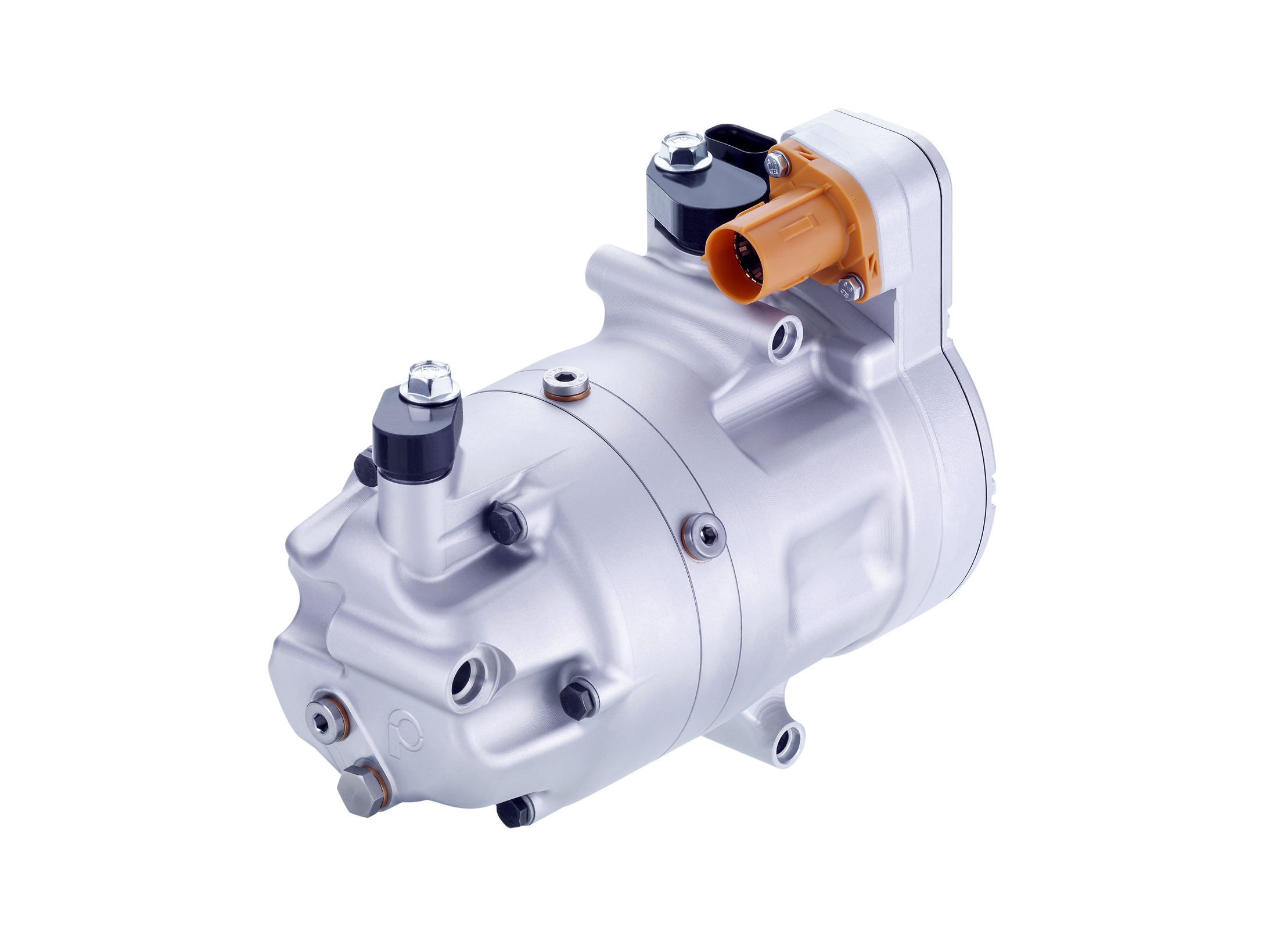
Air conditioning components specifically for electric vehicles
In vehicles with a conventional internal combustion engine, the a/c compressor is usually driven via a pulley and the V-belt but in electric vehicles, this mechanism is not available. Here, the a/c compressor is driven by an electric motor that is integrated into the vehicle's high-voltage network. Pierburg GmbH has therefore developed an a/c compressor (eCC) that incorporates the supplier's many years of experience in the field of mechatronic components.
The new unit is of compact design so that it can fit in the usual installation spaces and serves the regular voltage levels HV2 and HV3. The three modules – mechanical compressor unit, electric motor and power electronics – are modularly integrated.
During development, particular emphasis was placed on low weight and high operating efficiency. This ensures economical power management with the limited electrical energy available from the high-voltage storage unit in the vehicle.
Further functions at low temperatures
The well thought-out design of the machine allows not only classical air conditioning operation at warm outside temperatures but also heat pump operation at low ones. By using a heat pump to heat the driver’s cab, the energy flow from the high-voltage storage unit can be reduced as required, thus increasing the vehicle’s travel range.
A further development focus was the low noise of the compressor, since its sound and vibrations are perceived as disturbing by the driver and occupants.
Expansion valve for refrigerant circuits
In addition, the supplier has developed a further component – an electronically controlled expansion valve for the refrigerant circuit – and in the process was able to draw on its many years of experience in the field of mechatronics. The new valve is usually mounted on an evaporator or chiller and controls the refrigerant flow; these heat exchangers are suitable for use in air conditioning, cooling battery packs or electric driveline components.
Thanks to its compact design, the valve developed by Pierburg can be completely integrated into heat exchangers; the refrigerant flow can be regulated as required by means of an electric actuator, thus increasing the overall efficiency of the system.

